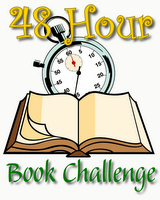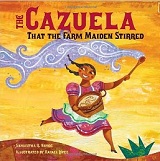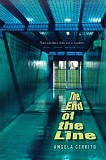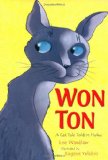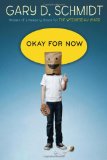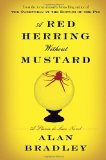Saturday Morning Check-In
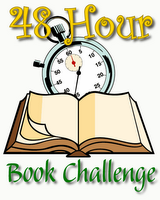 Good Morning! I’m off to a great start on the second day of the 48-Hour Book Challenge!
Good Morning! I’m off to a great start on the second day of the 48-Hour Book Challenge!
I decided that Tim having the SAT today was absolutely perfect — I took the day off work, and got up early — all the better to read! Of course, I listened to an audiobook in the car. The one I was listening to was the third CD of Cutting for Stone, by Abraham Verghese. It was kind of funny — they were talking about a doctor facing a difficult delivery of twins. Very specific. And then the doctor decided to crush the baby’s brain in order to get it out. Very graphic.
Of course, I apologized to my son for the unfortunate selection. He understood that I was listening so as not to have a break in the 48-Hour Book Challenge. He said it was no problem — that would probably be the selection they would have him analyze on the SAT.
Of course, that made me laugh! That would be the day! A selection involving a woman’s reproductive system and crushing the brain of a baby? Yeah, that would go over great on the SAT! So I sent him off to the test with a laugh. (I do love that kid’s sense of humor!)
Today I actually don’t have any more commitments at all except picking Tim up from the SAT at 12:45. Oh, and I need to call my Mom to wish her a Happy 70th (!) Birthday! But otherwise, my biggest challenge will be staying awake to read. I might give in and take a short nap — the better to stay up late tonight.
I did finish one book yesterday, and absolutely loved it — The Great Wall of Lucy Wu, by Wendy Shang. I did write a review, and promise to post it after I have written five reviews. Here are my stats so far:
Hours Reading: 5 hours, 45 minutes
Hours Blogging: 3 and a half
Time Listening: 20 minutes
Time Networking: 30 minutes
Grand total: 10 hours, 5 minutes
Not bad for 18 hours into the challenge. If I took 8 hours to sleep and shower and eat and do my writing, I hope that tomorrow, with going to church, I can keep it down to less than 10 hours — I want to hit 30 hours. It will be a challenge, but I might be able to do it….
Book stats are 418 pages read, one book finished. (I read a lot of excerpts from nonfiction.)
I’ve written 4 reviews, posted 4 quotes, and written one other blog post, for a total of 4,814 words.
Now, I am not writing reviews as quickly as I will need to if I want to make significant progress on getting caught up. I will have to start making them shorter. However, I am enjoying writing them, and I am writing them, so it’s all good. I have begun reading The Seven Towers, by Patricia C. Wrede, and I’m loving that, too.
This is proving to be a truly beautiful weekend! Read on!
